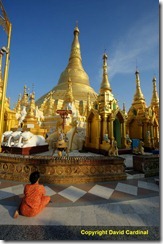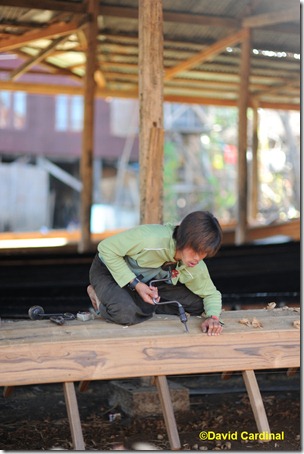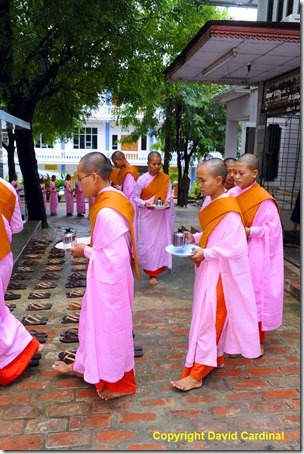- Photo Safaris
- Alaska Bears & Puffins World's best Alaskan Coastal Brown Bear photo experience. Small group size, idyllic location, deluxe lodging, and Puffins!
- Participant Guestbook & Testimonials Candid Feedback from our participants over the years from our photo safaris, tours and workshops. We don't think there is any better way to evaluate a possible trip or workshop than to find out what others thought.
- Custom Photo Tours, Safaris and Personal Instruction Over the years we've found that many of our clients & friends want to participate in one of our trips but the dates we've scheduled just don't work for them or they'd like a customized trip for their family or friends.
- Myanmar (Burma) Photo Tour Myanmar (Burma) Photo Tour December 2017 -- with Angkor Wat option
- Reviews Go hands-on
- Camera Reviews Hands-on with our favorite cameras
- Lens reviews Lenses tested
- Photo Accessories Reviews Reviews of useful Photo and Camera Accessories of interest to our readers
- Useful Tools & Gadgets Handy tools and gadgets we've found useful or essential in our work and want to share with you.
- What's In My Camera Bag The gear David Cardinal shoots with in the field and recommends, including bags and tools, and why
- Articles About photography
- Getting Started Some photography basics
- Travel photography lesson 1: Learning your camera Top skills you should learn before heading off on a trip
- Choosing a Colorspace Picking the right colorspace is essential for a proper workflow. We walk you through your options.
- Understanding Dynamic Range Understanding Dynamic Range
- Landscape Photography Tips from Yosemite Landscape Photography, It's All About Contrast
- Introduction to Shooting Raw Introduction to Raw Files and Raw Conversion by Dave Ryan
- Using Curves by Mike Russell Using Curves
- Copyright Registration Made Easy Copyright Registration Made Easy
- Guide to Image Resizing A Photographers' Guide to Image Resizing
- CCD Cleaning by Moose Peterson CCD Cleaning by Moose Peterson
- Profiling Your Printer Profiling Your Printer
- White Balance by Moose Peterson White Balance -- Are You RGB Savvy by Moose Peterson
- Photo Tips and Techniques Quick tips and pro tricks and techniques to rapidly improve your photography
- News Photo industry and related news and reviews from around the Internet, including from dpreview and CNET
- Getting Started Some photography basics
- Resources On the web
- My Camera Bag--What I Shoot With and Why The photo gear, travel equipment, clothing, bags and accessories that I shoot with and use and why.
- Datacolor Experts Blog Color gurus, including our own David Cardinal
- Amazon Affiliate Purchases made through this link help support our site and cost you absolutely nothing. Give it a try!
- Forums User to user
- Think Tank Photo Bags Intelligently designed photo bags that I love & rely on!
- Rent Lenses & Cameras Borrowlenses does a great job of providing timely services at a great price.
- Travel Insurance With the high cost of trips and possibility of medical issues abroad trip insurance is a must for peace of mind for overseas trips in particular.
- Moose Peterson's Site There isn't much that Moose doesn't know about nature and wildlife photography. You can't learn from anyone better.
- Journeys Unforgettable Africa Journeys Unforgettable -- Awesome African safari organizers. Let them know we sent you!
- Agoda International discounted hotel booking through Agoda
- Cardinal Photo Products on Zazzle A fun selection of great gift products made from a few of our favorite images.
- David Tobie's Gallery Innovative & creative art from the guy who knows more about color than nearly anyone else
- Galleries Our favorite images
US open floodgates to Burma (Myanmar)–The land that time forgot is quickly being remembered
US open floodgates to Burma (Myanmar)–The land that time forgot is quickly being remembered
Submitted by David Cardinal on Mon, 05/21/2012 - 12:50
 In the latest of a nearly unbelievable series of developments in Myanmar (still officially called Burma by the US, UK and Australia), President Obama has appointed Derek Mitchell (currently a US envoy to Myanmar) the first US ambassador to Myanmar since 1990. At the same time the financial sanctions that have helped cripple Burmese trade have been reduced by the US – following the trend set by the EU. The result is certain to be massively increased investment in – and tourism to – Myanmar. Read on to learn what that means for the country...
In the latest of a nearly unbelievable series of developments in Myanmar (still officially called Burma by the US, UK and Australia), President Obama has appointed Derek Mitchell (currently a US envoy to Myanmar) the first US ambassador to Myanmar since 1990. At the same time the financial sanctions that have helped cripple Burmese trade have been reduced by the US – following the trend set by the EU. The result is certain to be massively increased investment in – and tourism to – Myanmar. Read on to learn what that means for the country...
Impact of Globalization
F or the most part this should be excellent, even amazing, for the citizens of Myanmar (often referred to generically as Burmese, but technically the members of well over 100 ethnic groups including Burmese). Their historically export-led economy will no doubt boom – hotel rates in Yangon have already doubled as businesses seek a gold rush – and the stifled middle-class should begin to grow rapidly. However, the Burmese will also suffer the perils of globalization. To illustrate, here is a story from our most recent photo tour to Cambodia and Burma:
or the most part this should be excellent, even amazing, for the citizens of Myanmar (often referred to generically as Burmese, but technically the members of well over 100 ethnic groups including Burmese). Their historically export-led economy will no doubt boom – hotel rates in Yangon have already doubled as businesses seek a gold rush – and the stifled middle-class should begin to grow rapidly. However, the Burmese will also suffer the perils of globalization. To illustrate, here is a story from our most recent photo tour to Cambodia and Burma:
When we were visiting a village along Inle Lake – where nearly all travel is done by wooden boat – we asked the owner of a small boat-making shop where all the work is done by hand whether he’d considered using any power tools, especially for rip-sawing the often 20’ long beams of teak for the hulls. He looked like he had considered the option carefully and explained, “What would my cousins do?” We realized of course that the shop was more than just a job for a few workmen and artisans. It was the means of support for this man and his extended family. Replacing the two men working the ripsaw with a power saw would cost them their jobs, and replace them with expenses in fuel and repairs.
Up until now, with imports cut off, the hand-made boats have had the market to themselves. But imagine in a year or two, when resin-molded Chinese versions start to flood the market at a fraction of the cost. No doubt it will benefit the fishermen who need the boats for their livelihood, and may help save the teak forests, but it is likely to cost many of the workers who make the boats their jobs.
Imagine this story repeated thousands, perhaps millions, of times all over the country. For every entrepreneur who can now export their excellent lacquerware or stone carvings to the US and Europe, hundreds of local farmers, craftsmen and shop workers will need to drastically change the way they work or risk losing their incomes. This transition has happened, or is happening, in many countries, but probably faster in Burma than any of the others.
Now is the Time to Visit
 Myanmar is a large country, with plenty of areas that will be amazing to visit for many years to come. But the upcoming surge in tourism will make the major sites increasingly crowded. Fortunately for us (although perhaps not for the Myanmar economy), the tourist infrastructure is very limited right now – and will be for the next 1-2 years. There are only a few tourist-ready hotels in each city, a few vehicles that can be chartered, and a few really good english-speaking guides. That will all begin to change quickly as foreign capital pours into the industry, and the classic photo sites like the Shwedagon and Bagan will become crowded before too long.
Myanmar is a large country, with plenty of areas that will be amazing to visit for many years to come. But the upcoming surge in tourism will make the major sites increasingly crowded. Fortunately for us (although perhaps not for the Myanmar economy), the tourist infrastructure is very limited right now – and will be for the next 1-2 years. There are only a few tourist-ready hotels in each city, a few vehicles that can be chartered, and a few really good english-speaking guides. That will all begin to change quickly as foreign capital pours into the industry, and the classic photo sites like the Shwedagon and Bagan will become crowded before too long.
I expect to be able to find us new places to visit in Myanmar for many years (like the river trip we’ve added this year) but now is the time to see Myanmar the way it has been for centuries and before it catapaults into being a modern country. We’ve only got a couple spots left on our January, 2013 trip to Myanmar and Cambodia (which you can reserve online), but we’ll be headed back in December, 2013 or January, 2014 (email safaris [at] cardinalphoto.com you want to be on the list to be notified about those trips).
- Log in to post comments

